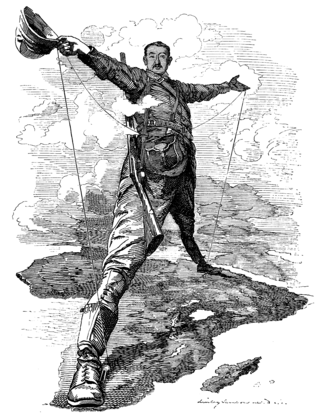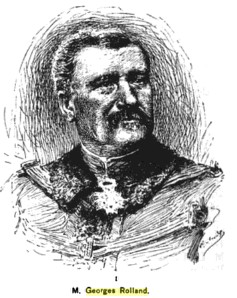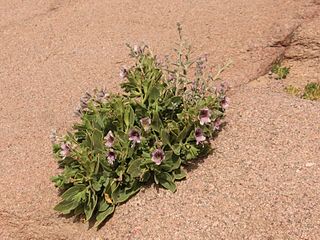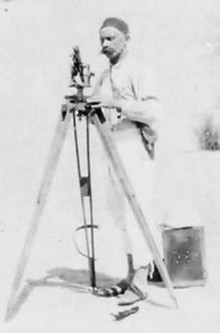
Nigeria’s transport network has expanded in recent years to accommodate a growing population. The transport and storage sector was valued at N2.6trn ($6.9bn) in current basic prices in 2020, down from N3trn ($8bn) in 2019, according to the National Bureau of Statistics (NBS). This was reflected in a lower contribution to GDP, at 1.8% in the fourth quarter of 2020, down from 2.1% during the same period the previous year but higher than the 0.8% recorded in the third quarter of 2020. One of the most significant challenges facing the sector is meeting the needs of both large coastal cities and rural inland communities in order to fully unlock the country’s economic potential. This is especially the case with mining and agriculture, both of which are expected to benefit from two large-scale projects: the Lekki Port in Lagos and the Kano-Maradi rail line in the north of the country.

The Sahara is a desert spanning North Africa. With an area of 9,200,000 square kilometres (3,600,000 sq mi), it is the largest hot desert in the world and the third-largest desert overall, smaller only than the deserts of Antarctica and the northern Arctic.

Trans-Saharan trade is trade between sub-Saharan Africa and North Africa, it requires travel across the Sahara. While existing since prehistoric times, the peak of trade extended from the 8th century until the early 17th century. The Sahara once had a very different environment. In Libya and Algeria, from at least 7000 BC, there was pastoralism, the herding of sheep, goats, large settlements, and pottery. Cattle were introduced to the Central Sahara (Ahaggar) from 4000 to 3500 BC. Remarkable rock paintings in places that are currently very dry, portray flora and fauna that are not present in the modern desert environment.

The Cape to Cairo Railway was an unfinished project to create a railway line crossing Africa from south to north. It would have been the largest and most important railway of that continent. It was planned as a link between Cape Town in South Africa and Port Said in Egypt.

Tuat, or Touat, is a natural region of desert in central Algeria that contains a string of small oases. In the past, the oases were important for caravans crossing the Sahara.

The Trans-Saharan gas pipeline is a planned natural gas pipeline from Nigeria to Algeria. It is seen as an opportunity to diversify the European Union's gas supplies.
Up to 2012 Chad had no rail system. Two lines are planned to Sudan and Cameroon from the capital, with construction expected to start in February 2016 and be complete in 4 years.

The Cairo–Cape Town Highway is Trans-African Highway 4 in the transcontinental road network being developed by the United Nations Economic Commission for Africa (UNECA), the African Development Bank (AfDB), and the African Union. The route has a length of 10,228 km (6,355 mi) and links Cairo in Egypt to Cape Town in South Africa.

Georges Rolland was a French geologist and industrialist, a member of the Corps des mines, who worked in Algeria in the 1880s. He made important discoveries about the underground hydrology of the Sahara. He was a leading advocate of a trans-Sahara railway to link French colonial possessions in West Africa. After returning to France he explored the geology of the Briey iron ore basin in Lorraine. He married the heiress of a Lorraine steelworks, and became president of the Société métallurgique de Gorcy and the Aciéries de Longwy, and director of various other enterprises.

Paul Flatters was a French soldier who spent a long period as a military administrator in Algeria. He is known as leader of the Flatters expedition, an ill-fated attempt to explore the route of a proposed Trans-Saharan railway from Algeria to the Sudan. Almost all members of the expedition were massacred by hostile Tuaregs. The survivors resorted to eating grass and to cannibalism on the long retreat through the desert. After a brief outburst of public indignation the fiasco was forgotten.

Hyoscyamus muticus, the Egyptian henbane, is a shrub in the family of Solanaceae that is native to desert areas of North Africa. It contains alkaloids that are useful in pharmaceuticals. It is used locally as a painkiller and a recreational drug. In high dosages it can be fatal.

Bir el-Garama is a well in the south of Algeria in Tamanrasset Province, 150 kilometres (93 mi) northeast of Tamanrasset, known as the site where a large part of the French colonial Flatters Expedition was wiped out by Tuaregs. It is better known on French maps by its Tamahaq language name: Tagmout T-an Koufar, or 'well of the foreigner'.
Justin Pouyanne was a French cartographer and explorer. He became an engineer, and served in Algeria for his entire career from 1859 to 1900, where he undertook extensive surveys.

Paul Soleillet was a French explorer in West Africa and Ethiopia. He was a strong believer in opening up Africa to trade through peaceful means, and thus bringing the benefits of French civilization to the natives while gaining commercial profits for France.

Gaston Méry was a French explorer. He was born in Algeria, son of one of the early settlers. After serving as a sailor and in the army, he assisted in surveys in Tunisia, then undertook three major expeditions into the Sahara in southern Algeria. He established friendly contact with the Tuareg people of the Kel Ajjer confederation, at the time considered unfriendly to the French, and mapped part of the route for a projected trans-Sahara railway to link Algeria to the Sudan. In the last years of his life he became a prosperous trader and real estate developer in Timbuktu.

Frédéric Alfred Le Chatelier was a French soldier, ceramicist and Islamologist. He spent most of his military career in the French African colonies. After leaving the army he was involved in a project to build a railway in the French Congo. He fought a duel and killed his opponent over mutual accusations of improper conduct concerning the Congo railways. He founded and ran a ceramics workshop for a few years before becoming a professor of Islamic Sociology at the Collège de France from 1902 to 1925. He exerted considerable influence over French policy towards the Muslim subjects of France's colonial empire, arguing for policy based on solidly documented facts, and for tolerance and sympathy to the rapidly changing Muslim societies.

The Trans-Saharan slave trade, also known as the Arab slave trade, was a slave trade in which slaves were transported across the Sahara. Most were moved from sub-Saharan Africa to North Africa to be sold to Mediterranean and Middle Eastern civilizations; a small percentage went the other direction. Estimates of the total number of black slaves moved from sub-Saharan Africa to the Arab world range from 6-10 million, and the trans-Saharan trade routes conveyed a significant number of this total, with one estimate tallying around 7.2 million slaves crossing the Sahara from the mid-7th century until the 20th century when it was abolished. The Arabs managed and operated the trans-Saharan slave trade, although Berbers were also actively involved.

Slavery is noted in the area later known as Algeria since antiquity. Algeria was a center of the Trans-Saharan slave trade route of enslaved Black Africans from sub-Saharan Africa, as well as a center of the slave trade of Barbary slave trade of Europeans captured by the barbary pirates.

















